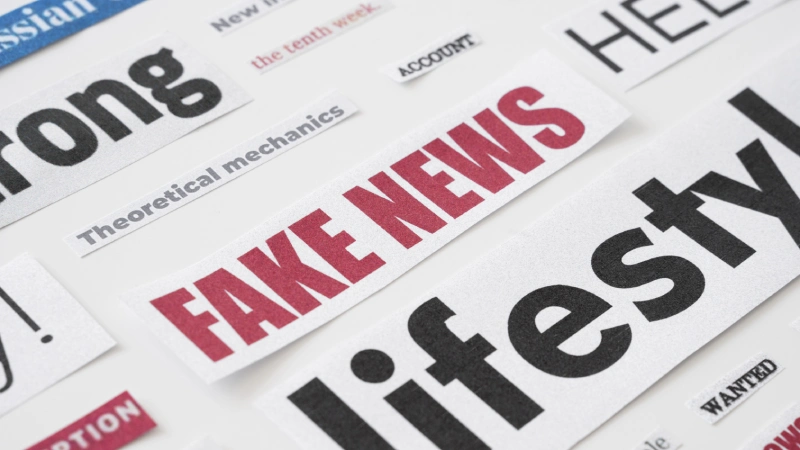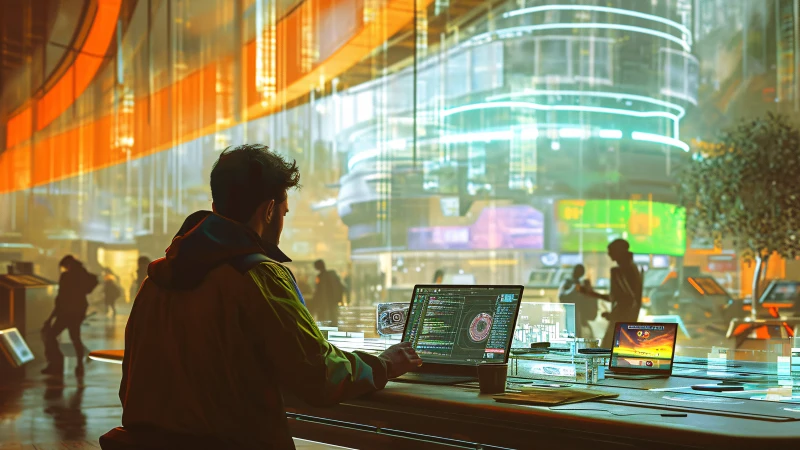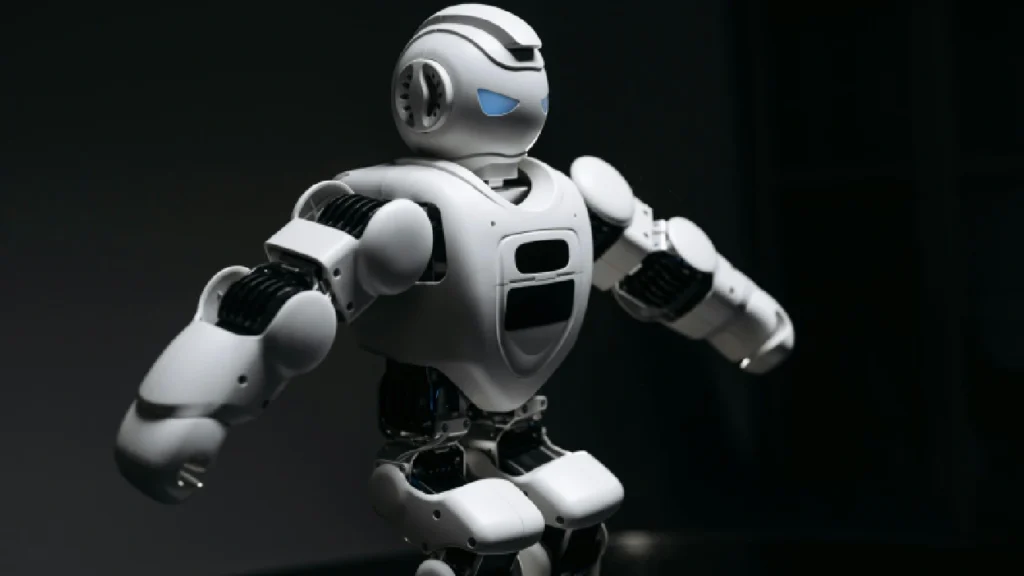Table of Contents
Highlights
- AI in election processes is reshaping democracy, offering tools that can both safeguard and endanger its integrity.
- On the positive side, AI helps detect fake news, secure voting systems, and assist voters with accurate, accessible information.
- However, it can also be misused through microtargeted political ads, deepfakes, and bot-driven misinformation campaigns that confuse voters and distort public opinion.
Artificial Intelligence (AI) is changing the way we live, and one of the most significant areas it is affecting are elections. As countries around the world prepare for critical votes, AI is playing a complicated role. It can help make elections fairer and more transparent, but it also has the potential to spread false information and manipulate public opinion. This raises an important question: is AI helping protect democracy, or is it putting it at risk?

How AI is Helping Protect Elections
AI has emerged as a valuable tool in modern democratic processes. It plays a growing role in maintaining the fairness, safety, and efficiency for elections. From analyzing digital misinformation to strengthening cybersecurity, AI is being deployed in a number of promising ways to support election integrity.
Spotting Fake News and Deepfake Videos
One of the most powerful uses of AI in elections is detecting and stopping the spread of misinformation. During election periods, false stories, edited images, and misleading videos can go viral within hours, misguiding voters and distorting the public narrative. AI tools help prevent this by scanning social media platforms, news websites, and online forums for signs of misinformation.
Natural language processing (NLP) models are trained to recognize patterns in speech and text that suggest a story might be false. For example, if a video appears to show a candidate making an outrageous statement, AI can analyze the video’s origin, audio, and visual layers to identify if it has been altered. Companies like Microsoft have developed deepfake detection tools that analyze facial movements and lighting inconsistencies, while Google’s Fact Check Tools help verify claims made online.
These tools provide journalists, election observers, and voters with a way to fact-check quickly, limiting the influence of falsehoods before they can take hold in public discourse.

Protecting Voting Systems from Cyber Threats
Election infrastructure is increasingly digital, ranging from electronic voting machines to voter registration databases. These systems, while convenient, are also vulnerable to cyberattacks. AI, in this case, is being used to strengthen digital defenses and detect unusual activity that might indicate an attempted hack.
Machine learning algorithms monitor network traffic, flagging suspicious behaviours like unauthorized access, login attempts from unusual locations, or tampering with voter databases. AI systems can respond instantly to potential threats, stopping attacks before they escalate.
In addition to real-time defense, AI supports post-election audits. Through statistical methods like risk-limiting audits, AI can analyze random samples of voters and compare them to reported outcomes. If discrepancies arise, election officials can take corrective action, adding another layer of confidence to the voting process.
Helping Voters Get Accurate Information
Elections often involve complex procedures and deadlines, which can confuse voters, especially in large, multilingual, or first-time voting populations. AI is helping bridge this gap through smart information services.
Virtual assistants, powered by AI, are available on official websites and messaging apps to answer voter queries. These bots can provide accurate information about polling places, voting hours, required documents, and more. Unlike traditional hotlines, AI systems can operate around the clock and handle thousands of queries simultaneously.

Moreover, AI tools can translate information into multiple languages and present it in accessible formats for people with disabilities. This ensures that all citizens, regardless of language or ability, can engage with the election process in a meaningful way.
Where AI Can Become a Threat to Democracy
Despite its advantages, AI also introduces new challenges. It can be exploited to spread misinformation, manipulate public opinion, and disrupt the electoral processes. The same features that make AI effective, its speed, scalability and personalization, can also make it dangerous when misused.
Targeting Voters with Manipulative Messages
Political campaigns have always relied on messaging to win over voters, but AI takes this to a whole new level. By analyzing data collected from social media, search histories, and online activity, AI can create detailed profiles of individuals and tailor ads specifically for them. This is known as microtargeting.
Microtargeting allows political actors to push specific emotional appeals, sometimes based on fear, anger, or identity, directly to targeted groups without public scrutiny. These messages may vary in tone or content depending on the audience, leading to a fragmented [public sphere.

The Cambridge Analytica scandal is a prime example. In 2016, the company used Facebook data to influence voter behaviour in the U.S. election and the Brexit referendum. Voters received different ads based on their personality traits, interests, and fears; often without realizing how their personal data was being used.
The Danger of Deepfakes.
Deepfakes are one the most unsettling developments in the AI landscape. These are synthetic media, videos or audio recordings, that look and sound real but are entirely fabricated. Using machine learning techniques, deepfakes can convincingly depict a public figure saying or doing things they never actually did.
In the context of elections, a single deepfake can have a devastating impact. Imagine a fake video of a candidate making racially motivated commentary that goes viral before the vote. Even if the video is later debunked, the damage to public opinion may already be done.
Though detection tools exist, they often lag behind the creation of new deepfake techniques. This arms race between creators and detectors makes it difficult to fully protect voters from being deceived by synthetic content.
Bots and Fake Accounts Spreading Lies.
Another major concern is the use of bots and fake accounts to flood online spaces with misleading information. These AI-driven bots can post thousands of messages, share propaganda, or artificially boost the popularity of certain narratives or hashtags.

During elections, this can skew perceptions of public opinion, confuse voters, and silence real voices. Bots can impersonate real users, create fake endorsements, and engage in smear campaigns. Their coordinated activity can push misinformation into the mainstream, giving fringe ideas the appearance of legitimacy.
Countries around the world, including Brazil, India, and the Philippines, have witnessed bot networks playing significant roles in spreading political propaganda, often in favour of ruling parties or powerful interest groups.
What is Being Done to Control AI in Elections.
As the risks associated with AI become more visible, governments, tech companies, and civil society organizations are taking action to regulate and control its use. Efforts are focused on creating legal frameworks, increasing transparency, and raising public awareness.
New Laws and Rules.
The European Union’s AI Act is one of the first major legislative efforts to address AI’s impact on society, including elections. Under this law, AI systems used for political influence are considered high-risk and must meet strict transparency and safety standards. This includes documenting how the AI works, what data it uses, and ensuring human oversight.
In the United States, the Federal Election Commission is examining ways to regulate AI-generated political ads. Several state legislatures are also drafting laws that require AI-generated content to be labelled clearly.
India, which has a large and diverse voting population, is also developing rules to counter deepfakes and automated disinformation. However, enforcement remains a challenge, especially when false content is created or charred from outside national borders.

Pushing for Honesty and Education.
Beyond legal measures, a growing movement is calling for tech companies to take more responsibility. This includes clearly labelling AI-generated images or videos, disclosing how political ads are targeted, and removing harmful content faster.
At the same time, improving digital literacy is essential. Educational campaigns are teaching voters how to spot fake news, question viral content, and think critically about what they see online. Schools, NGOs, and media outlets are all part of this effort to build public resilience against manipulation.
While some platforms like YouTube and Meta have begun to act, labelling manipulated content or updating their ad policies, many experts argue these actions are not fast or strong enough to keep up with AI’s rapid evolution.
A Future to Watch Closely.
The relationship between AI and elections is still developing, and its future remains uncertain. If harnessed responsibly, AI can be a force for good, making voting more secure, accessible, and inclusive. But if left unchecked, it could also become one of the most dangerous tools for manipulating democracy.
Navigating this complex landscape will require cooperation at all levels. Governments need to pass smart laws, tech companies must act responsibly, and voters must stay informed. Civil society organizations will also play a vital role in holding powerful actors accountable and also with educating the public.
In the end, AI is not inherently good or bad. It is a tool, and how it affects elections depends entirely on how we choose to use it. By understanding the risks, supporting transparency, and demanding fairness, we can ensure that technology strengthens rather than weakens our democratic systems.